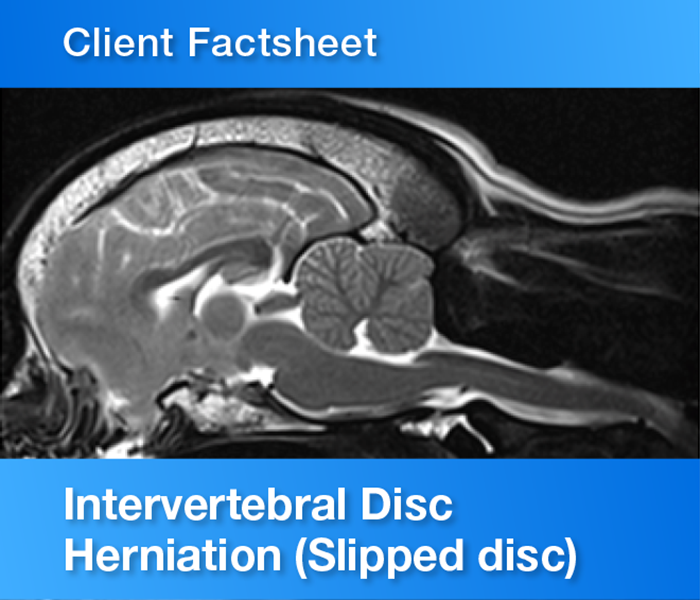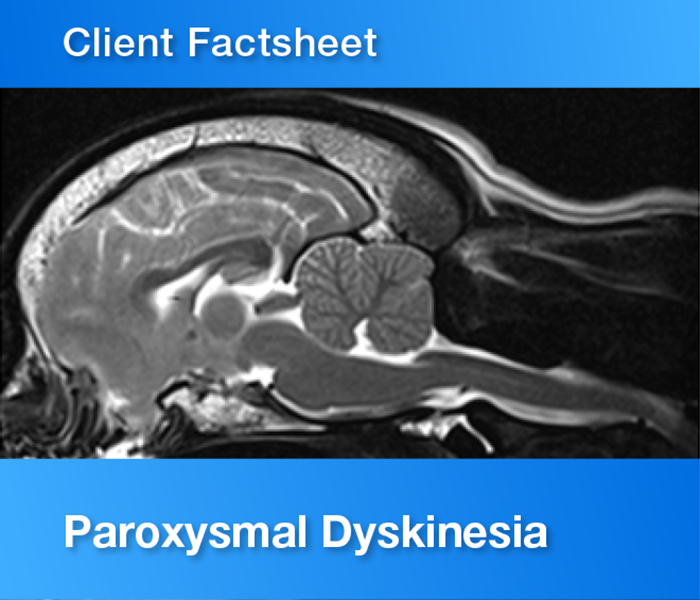Syringomyelia (Sigh-rin-go-my-ee-lee-a) is a complex condition which affects the spinal cord. Syringomyelia is a descriptive term for a collection of fluid pockets (singular: syrinx, plural: syringes) within the spinal cord.
Because the dilated fluid area is causing damage to cells in the spinal cord, there are alterations in the signals from the nerves in the neck to the brain. There is great variation of the type and severity of symptoms a patient with this condition will show. Very often the signs are quite mild. There may be abnormal pain sensations (including itchiness, hot or cold ‘flushes’, ‘pins and needles’); there may be abnormal muscle posture that can result in a head tilt or scoliosis and, in more severe cases, weakness and wobbliness.
What causes syringomyelia?
Spinal fluid is produced in the brain to nourish it and remove waste from the nervous system. The fluid flows from the head, along the spine and is slowly resorbed. A syrinx is a fluid pocket which forms due to abnormal flow in the spinal fluid system, normally as a result of flow alteration or obstruction.
In the majority of cases, the obstruction is a congenital (from birth) malformation of the skull called a ‘Chiari-like malformation’, which alters the flow of spinal fluid between the skull and spinal cord. The term Chiari-like malformation refers to an abnormal conformation whereby there is a mismatch in the size of the brain (too large) and the skull (too short). This mismatch in size compresses the back part of the brain into the opening at the back of the skull and obstructs the flow of cerebrospinal fluid to the spine. This malformation is present in many cavalier king Charles spaniels and other small breed dogs and may not cause clinical signs itself; it can often be considered an incidental finding.
Even syringomyelia can show no symptoms but signs can appear months to years after an incidental detection; if your veterinary neurologist makes this diagnosis it is important to understand whether they feel it is clinically significant.
What are the clinical signs (symptoms)?
As previously mentioned, by far the most common clinical sign of syringomyelia is pain – this may manifest as a yelp or other spontaneous vocalisation, expressing pain when moving or when being lifted, reluctance to exercise etc. The dog may attempt to relieve discomfort by scratching the neck without making contact, rubbing the face repeatedly or licking the paws excessively. Of course, it is hard for us to tell what our pets are feeling and some dogs may show these signs for completely unrelated conditions like flea allergies and ear infections.
How do you make a diagnosis?
Full assessment of syringomyelia and the underlying cause can only be made using MRI scanning (magnetic resonance imaging). However, finding abnormalities does not mean that a dog will develop symptoms.
What are the treatment options?
Many dogs with clinical signs associated with syringomyelia will live a normal life, though certain activities may cause additional pain (eg neck patting, ear rubs, eating off the ground etc) and should be avoided if it affects your dog.
The majority of patients will respond to medical treatment to control these symptoms; however, it is a chronic condition and treatment may be required for some time, possibly life. Treatment is aimed at reducing pain and inflammation associated with the formation phase of a syrinx.
There are several classifications of drugs your veterinary neurologist may prescribe for this condition. Commonly, we use short courses of non-steroidal anti-inflammatory drugs like paracetamol, meloxicam and carprofen. We often use an anti-epileptic drug, called ‘gabapentin’ or ‘pregabalin’, which controls ‘neuropathic’ pain, a type of pain originating in the nerves. Gabapentin or pregabalin rarely cause side effects; tiredness and ataxia (being off-balance) are our main concerns. These side effects are not experienced by all patients and would hopefully be mild.
Surgery may be a possibility to treat the condition. The goal of surgery is to reduce the pressure on the skull base, allowing the fluid to flow normally. There is some evidence to suggest that the syringes may then resolve. However, there is no evidence that surgery is a better long-term treatment option than medical therapy, so we reserve this treatment option for patients with severe and progressive clinical signs.
Will a dog with this condition live a normal life?
Generally the prognosis for this condition is good. The reason for this is that most patients show a good response to treatment, and treatment can very often be withdrawn with time. It seems that the early phase (the inflammatory, formation phase) of a syrinx is most painful and when this has finished a patient may return to normal. However, it is very important to keep in touch with your veterinary neurologist regarding your pet’s condition.
Occasional visits to your vet may be required during the course of treatment. Your vet may suggest blood tests every few months to assess the function of organs that may be affected by treatment. How often this is required will be dependent on each individual patient’s response to treatment.
If you have any concerns about your dog or their treatment, do not hesitate to contact your vet.



